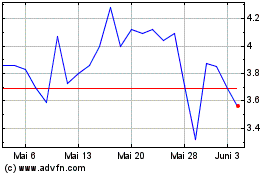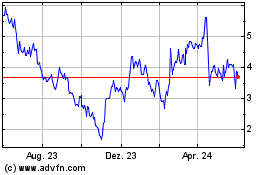Prelude Therapeutics Incorporated (Nasdaq: PRLD) (“Prelude” or the
“Company”), a clinical-stage precision oncology company, today
announced the presentation of the first interim clinical data from
its ongoing open-label, dose-escalation trial of PRT2527, a potent
and highly selective CDK9 inhibitor, as monotherapy and in
combination with zanubrutinib in patients with relapsed/refractory
lymphoid malignancies. The data were presented at a poster session
of the 66th American Society of Hematology Annual Meeting in San
Diego, California.
The study investigators reported on the 46 patients that were
enrolled, treated, and safety evaluable as of September 17, 2024.
PRT2527 was generally well-tolerated through 4 dosing cohorts as
monotherapy and 3 dosing cohorts in combination with zanubrutinib.
PRT2527 monotherapy and in combination with zanubrutinib
demonstrated an acceptable safety profile with evidence of
preliminary activity in patients with relapsed/refractory lymphoid
malignancies, including patients who received prior CAR-T
therapy.
“CDK9 has long been considered a potential therapeutic approach
for treating hematologic malignancies and a highly selective CDK9
inhibitor was sought to minimize off target toxicity,” stated Jane
Huang, M.D., President and Chief Medical Officer of Prelude. “We
are encouraged by the results demonstrated to date by PRT2527 both
as a monotherapy and particularly in combination with zanubrutinib
resulting in an overall response rate of 38.5% including two
patients with aggressive lymphomas who had received prior CAR-T
therapy. These results represent a positive step for CDK9
inhibition as a possible future therapeutic approach for patients
with aggressive hematologic cancers with limited treatment
options.”
PRT2527 Interim Phase 1 ResultsPRT2527 is an
investigational, potent and highly selective CDK9 inhibitor being
evaluated in select relapsed/refractory (R/R) hematologic
malignancies as monotherapy and in combination with
zanubrutinib.
As of the cutoff date, 46 patients with relapsed/refractory
lymphoid malignancies were treated with PRT2527. 29 patients were
treated once weekly via intravenous infusion at four dose levels of
PRT2527 monotherapy (9 mg/m2, 15 mg/m2, 18 mg/m2, 24 mg/m2) and 17
patients were treated once weekly at three dose levels of PRT2527
(9 mg/m2, 15 mg/m2, 18 mg/m2) in combination with zanubrutinib
administered orally starting on C1D1 at 320 mg daily or 160 mg BID.
Initial Safety DataThe most frequent treatment
emergent adverse events (TEAEs) observed in ≥20% of patients were
neutropenia (48%) and nausea (33%), and the most frequent grade ≥3
TEAEs (≥10% of patients) were neutropenia (46%) and anemia (11%).
Five patients discontinued treatment due to TEAEs in the
monotherapy cohort; 3 TEAEs in 1 patient were treatment related:
grade 3 hypotension, grade 3 diarrhea, and grade 4 neutropenia (n=1
each). No TEAEs led to treatment discontinuation in the combination
therapy cohort.
PRT2527 dose interruptions due to TEAEs occurred in 17 patients
(11 monotherapy; 6 combination therapy). Most dose interruptions
were due to neutropenia and were managed with growth factor
support. One DLT of grade 3 tumor lysis syndrome (TLS) occurred in
a patient with primary cutaneous peripheral T cell lymphoma who had
extensive disease at the 24 mg/m2 monotherapy dose level and did
not receive ramp-up dosing. TLS was managed with rasburicase and IV
fluids and resolved. The patient was able to resume study treatment
as planned. No DLTs were observed in the combination therapy
cohort.
Dose level 3 (18 mg/m2) was selected for dose confirmation for
monotherapy and in combination with zanubrutinib due to higher
rates of grade 3/4 neutropenia and of dose interruptions and
reductions in the 24 mg/m2 dose level.
Analysis of Initial Clinical ActivityOf the 23
efficacy evaluable patients in the monotherapy cohort, complete
responses (CRs) were observed in 1 patient (DLBCL) and 3 partial
responses observed (TCL), with an overall response rate (ORR) of
17.4% (4 of 23). Of the 13 patients in the combination cohort who
were evaluable for efficacy, complete responses (CRs) were observed
in 3 patients (2 DLBCL, 1 MCL) and 2 partial responses (PRs)
observed (DLBCL and CLL) with an overall response rate (ORR) of
38.5% (5 of 13).
The above-noted presentation can be found at Publications -
Prelude Therapeutics (preludetx.com).
“We believe the clinical data presented today with PRT2527
confirm our hypothesis that a highly selective and potent inhibitor
of CDK9 has the potential to offer meaningful clinical activity for
patients with hematologic malignancies, while avoiding the
off-target toxicities observed with less selective agents,” stated
Kris Vaddi, Ph.D., Chief Executive Officer of Prelude. “However,
given the significant progress and potential of our SMARCA degrader
programs that are currently advancing in the clinic, along with our
productive discovery organization, we plan to focus our resources
towards the continued advancement of those programs. As a result,
we will only advance the CDK9 program with a partner beyond
completion of the current ongoing Phase 1 study.”
About Prelude Therapeutics
Prelude Therapeutics is a leading precision oncology company
developing innovative medicines in areas of high unmet need for
cancer patients. Our pipeline is comprised of several novel drug
candidates including first-in-class, highly selective IV and oral
SMARCA2 degraders, and a potentially best-in-class CDK9 inhibitor.
We are also leveraging our expertise in targeted protein
degradation to discover, develop and commercialize next generation
degrader antibody conjugates (Precision ADCs) with partners. We are
on a mission to extend the promise of precision medicine to every
cancer patient in need. For more information, visit
preludetx.com.
Cautionary Note Regarding
Forward-Looking Statements
This press release contains forward-looking
statements within the meaning of the "safe harbor" provisions of
the Private Securities Litigation Reform Act of 1995, including,
but not limited to, anticipated discovery, preclinical and clinical
development activities for Prelude’s product candidates, the
potential safety, efficacy, benefits and addressable market for
Prelude’s product candidates, and clinical trial results for
Prelude’s product candidates. All statements other than statements
of historical fact are statements that could be deemed
forward-looking statements. The words “believes,” “anticipates,”
“estimates,” “plans,” “expects,” “intends,” “may,” “could,”
“should,” “potential,” “likely,” “projects,” “continue,” “will,”
“schedule,” and “would” and similar expressions are intended to
identify forward-looking statements, although not all
forward-looking statements contain these identifying words. These
forward-looking statements are predictions based on the Company’s
current expectations and projections about future events and
various assumptions. Although Prelude believes that the
expectations reflected in such forward-looking statements are
reasonable, Prelude cannot guarantee future events, results,
actions, levels of activity, performance or achievements, and the
timing and results of biotechnology development and potential
regulatory approval is inherently uncertain. Forward-looking
statements are subject to risks and uncertainties that may cause
Prelude's actual activities or results to differ significantly from
those expressed in any forward-looking statement, including risks
and uncertainties related to Prelude's ability to advance its
product candidates, the receipt and timing of potential regulatory
designations, approvals and commercialization of product
candidates, clinical trial sites and our ability to enroll eligible
patients, supply chain and manufacturing facilities, Prelude’s
ability to maintain and recognize the benefits of certain
designations received by product candidates, the timing and results
of preclinical and clinical trials, Prelude's ability to fund
development activities and achieve development goals, Prelude's
ability to protect intellectual property, and other risks and
uncertainties described under the heading "Risk Factors" in
Prelude’s Annual Report on Form 10-K for the year ended December
31, 2023, its Quarterly Reports on Form 10-Q and other documents
that Prelude files from time to time with the Securities and
Exchange Commission. These forward-looking statements speak only as
of the date of this press release, and Prelude undertakes no
obligation to revise or update any forward-looking statements to
reflect events or circumstances after the date hereof, except as
may be required by law.
Investor Contact: Robert A. Doody
Jr.Senior Vice President, Investor
Relations 484.639.7235rdoody@preludetx.com
Prelude Therapeutics (NASDAQ:PRLD)
Historical Stock Chart
Von Nov 2024 bis Dez 2024

Prelude Therapeutics (NASDAQ:PRLD)
Historical Stock Chart
Von Dez 2023 bis Dez 2024
